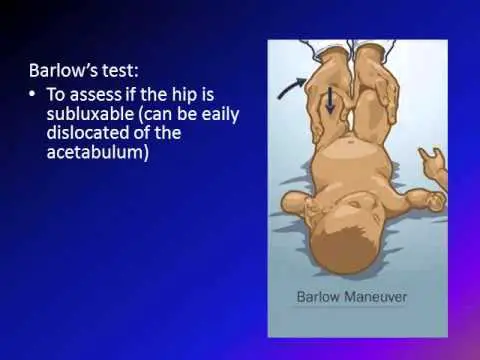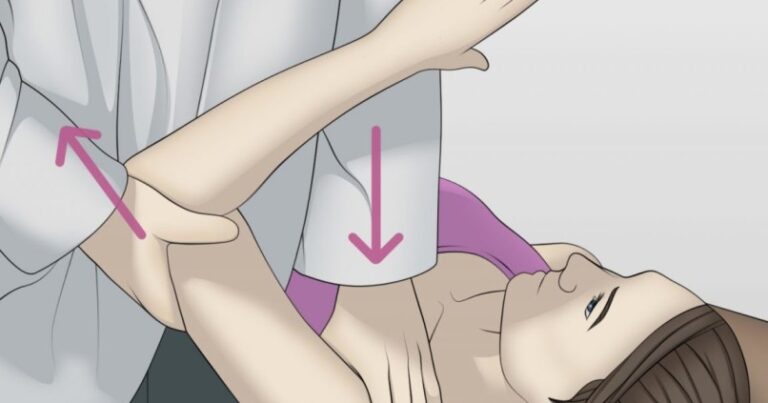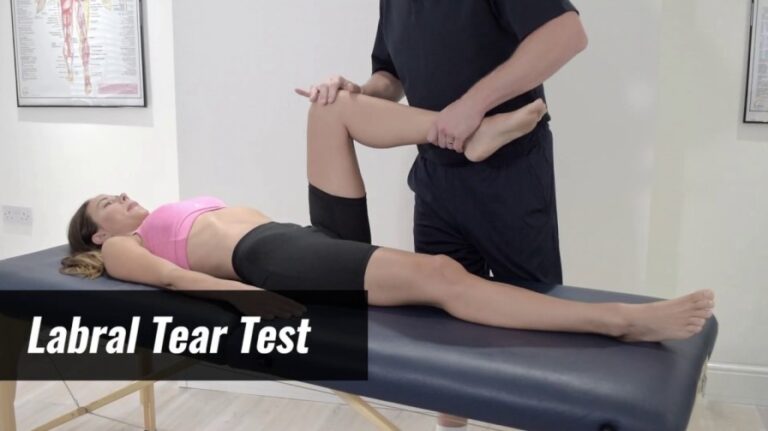Barlow’s Test for Hip Pathology
What is a Barlow’s Test?
Barlow’s test is a medical maneuver used to assess the stability of the hip joint, particularly in infants. It is employed to detect the risk of developmental dysplasia of the hip (DDH), a condition where the ball and socket joint of the hip do not properly form in babies.
This test is named after Thomas Barlow, a British physician who described the clinical signs and management of DDH in the late 19th century.
- This test is used to detect hip pathology in pediatrics.
- This test is an orthopedic test that is performed on newborn babies.
- This test is used to detect too many genital problems like CDH or DDH [development dysplasia of the hip].
- This test is a modification of Ortolani’s test.
Purpose of this Barlow’s test
- This test is used to check the DDH [development dysplasia of the hip] means pediatric pathology of the hip
How do you perform this Barlow’s test?

- Into the starting position infant lies supine with the legs facing the examiner.
- The hips are flexed to 90′,&the knees are fully flexed.
- Each hip is evaluated individually while the examiner’s other hand steadies the opposite femur & the pelvis.
- The examiner’s middle finger of each hand is placed over the greater trochanter,&the thumb is placed adjacent to the inner side of the knee &thigh opposite the lesser trochanter.
- The hip is taken into abduction while the examiner’s middle finger applies forward pressure behind the greater trochanter.
What is the result of this Barlow’s test?
- If the femoral head slips forward into the acetabulum with a click, clunk, or jerk, the test is positive.
- It indicates that the hip was dislocated.
- This part of the test is identical to Ortolani’s test.
- The examiner then uses the thumb to apply pressure backward & outward on the inner thigh.
- If the femoral head slips out over the posterior lip of the acetabulum & then reduces again when pressure is removed, the hip is classified as unstable.
- The hip is not dislocated but is dislocated.
- This test procedure is repeated for the other hip.
- This test may be used for infants up to 6 months of age.
- It should not be repeated too often, because it may result in a dislocated hip as well as articular damage to the head of the femur.
FAQs
What is the Barlow and Ortolani test?
Examiner: Holding the baby’s thigh close to the hip, the examiner applies light posterior/lateral pressure in an attempt to move the femoral head out of the acetabulum. This direction is normally devoid of motion. There may be a noticeable “clunk” when the femoral heads burst out of the joint if the hip is dislocatable.
What is the difference between Barlow and Ortolani clunk?
During the Barlow procedure, a palpable clunk signifies positive instability with posterior displacement. The Ortolani test is a reductive technique that lifts the greater trochanter via abduction combined with posterior pressure. With this test, a clunk sensation indicates a positive decrease of the hip.
What test is done to detect congenital dislocation in newborns?
The Ortolani and Barlow tests are the two primary tests frequently utilized to identify congenital dislocation of the hip (CDH) or developmental dysplasia of the hip (DDH) in infants. These exams are frequently carried out in combination as a comprehensive physical assessment of a newborn’s hips. They are essential for hip dysplasia sufferers in order to detect and treat the condition early.







